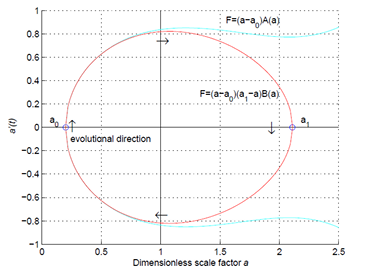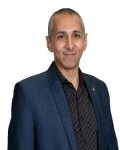


Full Issue
| View or download the full issue |
Issue release: 30 June 2024
Fermat’s last theorem appears not as a unique property of natural numbers but as the bottom line of extended possible issues involving larger dimensions and powers when observed from a natural vector space viewpoint. The fabric of this general Fermat’s theorem structure consists of a well-defined set of vectors associated with N-dimensional vector spaces and the Minkowski norms one can define there. Here, a special vector set is studied and named a Fermat surface. Besides, a connection between Fermat surfaces and hypercubes is unveiled.
Issue release: 30 June 2024
We construct the galaxies of sequences of Toeplitz matrix solutions of the Diophantine equation Xn + Yn = Zn, n ≥ 3, linked to Pythagorean triples.
Issue release: 30 June 2024
The paper introduces an iterative method for solving nonlinear Volterra integral equations and analyzes its convergence, stability, and application through examples. It expresses the general nonlinear Volterra integral equation as a series and decomposes the nonlinear operator to derive a recursive formula for the proposed iterative method. The method ensures absolute and uniform convergence, with stability analysis conducted to ensure bounded errors in the presence of perturbations. Convergence analysis utilizes the Lipschitz condition, demonstrating the uniform convergence of the solution series. Illustrative examples, including power nonlinearity and trigonometric functions, validate the stability and convergence of the method. Through graphical representations, convergence analyses for specific integral equations demonstrate the method’s effectiveness and applicability in solving diverse nonlinear integral equations. Overall, the paper contributes a robust iterative method with insights into its stability and convergence properties, supported by practical examples.
Issue release: 30 June 2024
Herein, we provide an efficient spectral Galerkin algorithm, according to a special type of shifted Legendre basis for finding a semi-analytic solution to the Liouville-Caputo fractional boundary value problem. The algorithm’s main goal is to transform the fractional differential problem into a linear system with efficiently invertible, well-structured matrices. The convergence rates of the algorithm are carefully obtained as well as the error bound.
Issue release: 30 June 2024
Uncertain events frequently occur in today’s financial markets. Consequently, the issue of portfolio selection is becoming increasingly significant. This paper thoroughly considers the complexities of stock returns in real-world scenarios and employs uncertain differential equations (UDE), uncertain time series analysis (UTSA), stochastic differential equations (SDE), and random time series analysis (RTSA) to predict stock returns, thereby enhancing the accuracy of these predictions. Furthermore, this paper addresses investors’ preferences and the limitations of using variance as a measure of investment risk. It introduces a risk preference factor and proposes an uncertain random mean-lower variance model. Finally, a genetic algorithm is utilized to solve the model, and numerical simulations are conducted to demonstrate the model’s practicality.
Issue release: 30 June 2024
This contribution presents a highly efficient three-step iterative scheme. The proposed scheme is different in itself by achieving seventh-order convergence. The scheme is very useful for equations of nonlinear nature having multiple roots. The Taylor series expansion is employed to rigorously analyze the convergence of the presented scheme. That the scheme is effective and robust can be fit through a variety of examples from different fields. Numerical experimentation demonstrates the scheme’s rapid and reliable convergence to the true root and comparing its performance against existing techniques in the literature. Additionally, basins of attraction are visualized to offer a clear, comparative view of how different methods perform with varying initial guesses. The results show that this new scheme consistently compete well over other methods. This makes it a powerful tool for solving complex equations.
Issue release: 30 June 2024
This note reviews the iterative methods introduced in “Stability and Data Dependence Results for Jungck-Type Iteration Scheme”. It has been observed that these methods are not entirely new to a significant extent, as they bear resemblance to previously established approaches. Additionally, the primary iterative method proposed in the paper lacks efficiency, particularly when compared to more advanced or well-known methods. As a result, while the methods may offer some value, they do not represent a significant breakthrough in iterative techniques.
Issue release: 30 June 2024
This paper summarizes results recently obtained from simulation of transient temperature excursions in filamentary and thin film superconductors. Under multi-component heat transfer in the complicated conductor cross sections and materials composition of present High Temperature Superconductors, numerical, Finite Element and Monte Carlo simulations are applied to solve Fourier’s differential equation with high spatial and temporal resolution. The overall aim was to encircle the quench problem in superconductors and to provide new stability criteria from correlations between superconductor critical current density, density of electron pairs, and relaxation time and entropy. Relaxation, correlation and entropy analysis presented in this paper extends the spectrum of standard methods to avoid quench to a new tool. As results, quench starts always locally, and as a highlight of this investigation, a second “critical” temperature, TQuench, has been identified that with high probability exists below standard critical temperature. Entropy is the driving force for relaxation of the superconductor to new equilibrium after a disturbance.
Editor-in-Chief

Prof. Youssri Hassan Youssri
Cairo University, Egypt
Asia Pacific Academy of Science Pte. Ltd. (APACSCI) specializes in international journal publishing. APACSCI adopts the open access publishing model and provides an important communication bridge for academic groups whose interest fields include engineering, technology, medicine, computer, mathematics, agriculture and forestry, and environment.


 Open Access
Open Access
.jpg)

.jpg)
